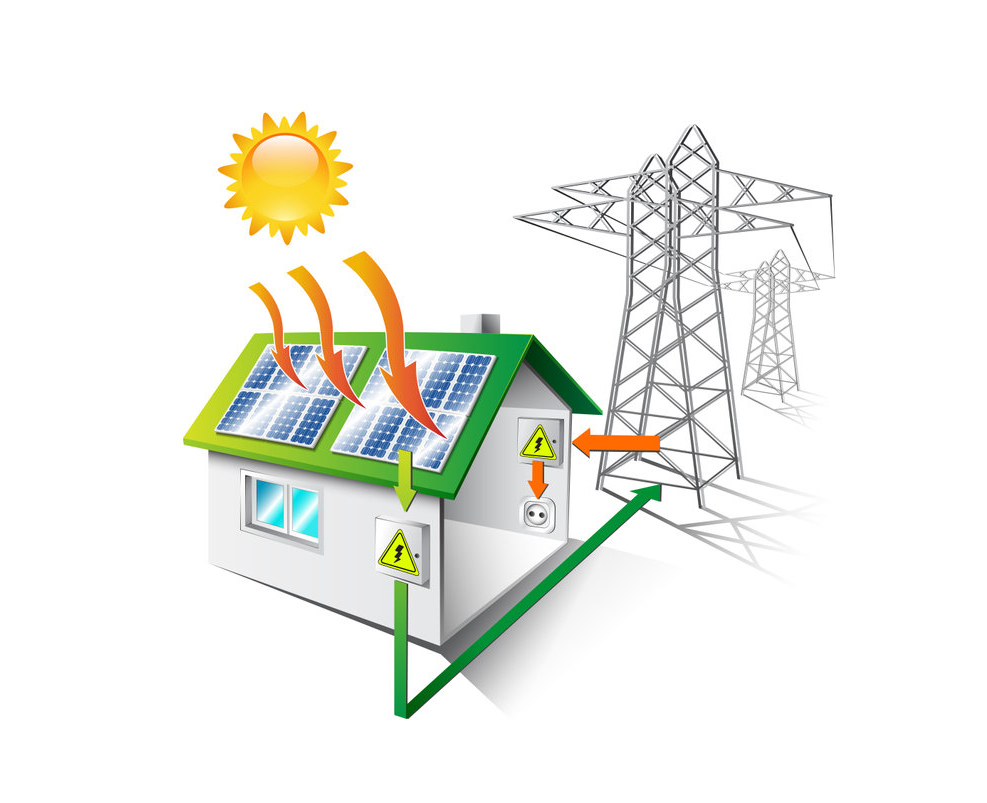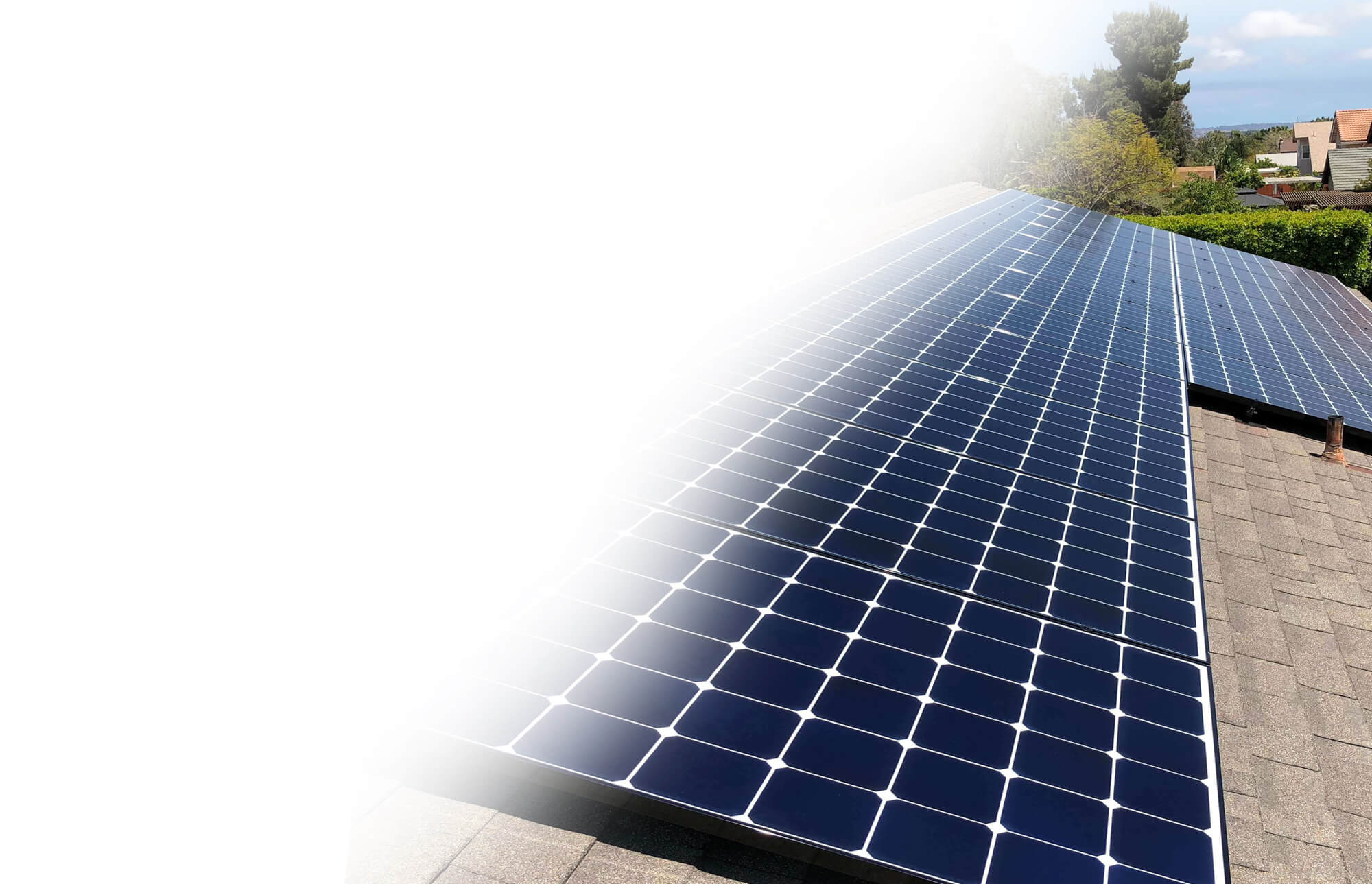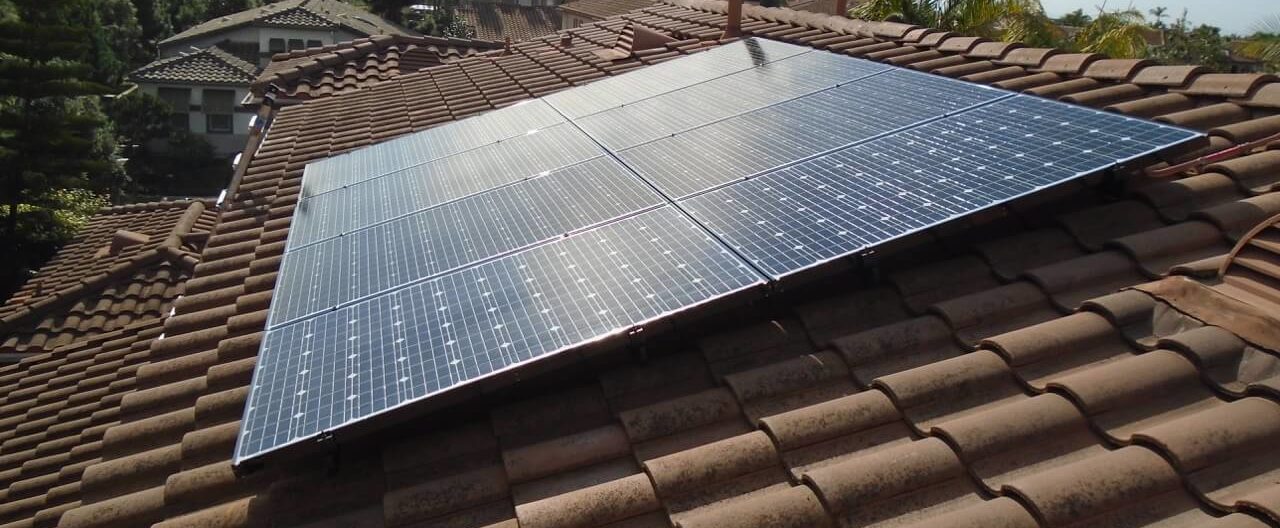
How Solar Systems Work
to Power Your Home
Solar panels are installed in a sunny location, usually on the roof of your home. When the sun rises, light hits the solar cells and they start producing electric energy. This energy is then introduced to your electric service panel where it first goes to power your home.
As the intensity of sunlight grows stronger, your solar panels will produce more energy. By mid-day most solar powered homes are generating more energy than they are consuming. When this occurs, excess energy is generally stored in a battery to be consumed later. If any excess energy flows back to the utility grid, your SDG&E meter will actually credit you for the energy you are exporting.
At times when your solar and battery system is not producing enough energy to completely power your home, electric energy will come from SDG&E just like it always has. Your home will operate as it normally does, whether your electric energy is coming from your solar system or from SDG&E.
With a solar energy system on your home, your SDG&E meter will go forward and backward. At the end of each month you will either have a debit or credit on your electric bill. This process is called “Net Metering.”

Benefits of Solar Power
“I’d put my money on the sun and solar energy. What a source of power!”
-Thomas Edison
SAVINGS
Pay less each month with solar than you’ve been paying to SDG&E.
TAX CREDIT
The savings don’t stop at the meter. Earn a tax credit at the end of the year too!
SUSTAINABILITY
Help society transition to a more sustainable model by taking advantage of a renewable resource.
PROPERTY VALUE
Increase the value of your home, benefiting a future sale or equity loan.
Once you have the equipment,
the fuel is free!
Wouldn’t it feel great to have some independence from SDG&E – your local utility company that continues to raise rates year after year? Just imagine the feeling you’ll get when your monthly bill reads “no payment is required at this time.” Wouldn’t it be great to open only one annual bill that’s about the same than the bills you used to pay every month? Our customers tell us it’s terrific!
Beyond saving money on utility bills, energy generated with solar panels is free of pollutants. Installing solar panels will help you, your family, and your neighbors breathe easier.
Help break our dependence on fossil fuels. While there is disagreement over when we’ll exhaust the supply of fossil fuels, there is no denying that fossil fuel resources are limited.
Installing solar panels is a step toward a more peaceful planet for future generations. There is no need to deploy troops to protect solar energy interests in dangerous, faraway lands. The sun rises in San Diego every day. With your own solar power plant, you can generate clean, renewable energy right where it will be consumed.
Increase the value of your home with solar panels. There is mounting evidence that a San Diego home’s value is increased when it has a solar power system installed.
Take advantage of the solar energy tax credit. In most cases, the Federal government will pay for 30% of the cost of going solar through an income tax credit. We recommend you check with your tax preparer to learn how you can benefit from a solar panel installation.
If you haven’t installed solar panels on your home yet, we’re happy to help you determine if it makes sense for you.



